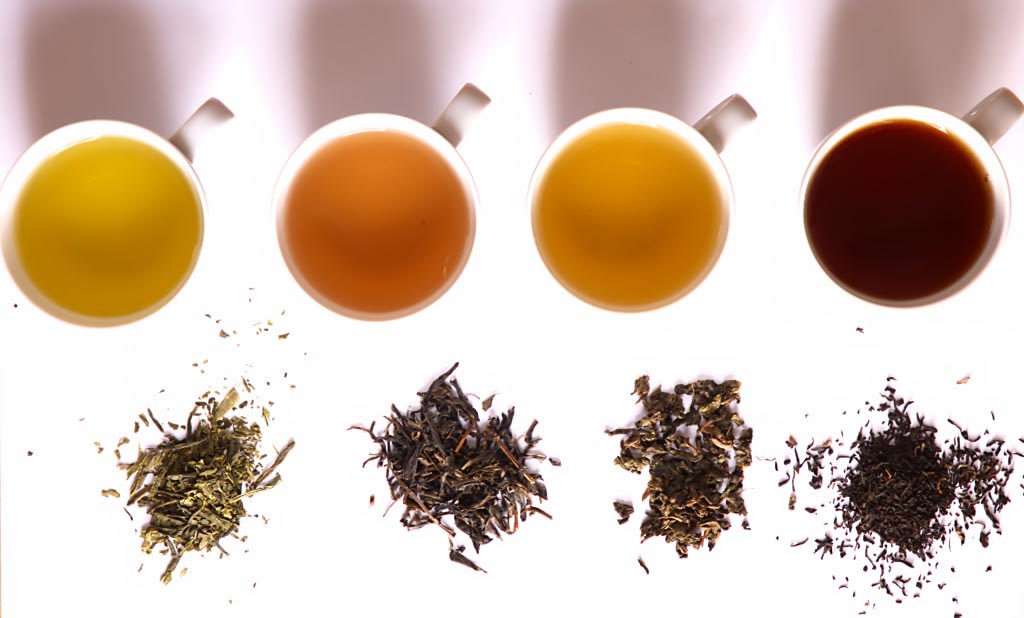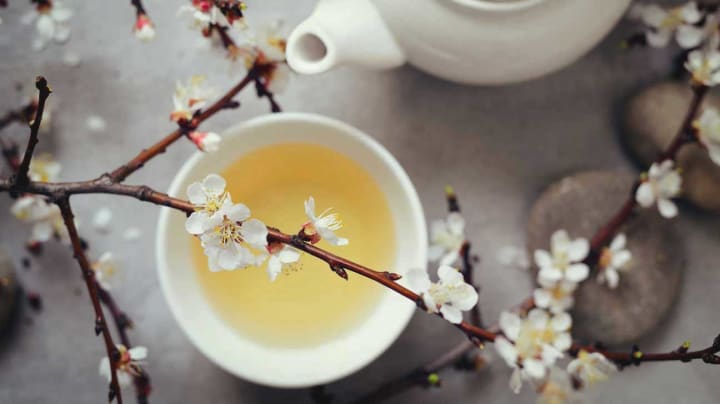GTR: Identifying Teas Pt. 1 - White Tea
A Beginner's Guide to the World of Tea

Hello, and welcome back to a great edition to the Ginger Tea Reviews! Tea is my passion, and I am making it my goal to share my passion with the world!
We spend a lot of time talking about different blends of tea, but we really don't talk much about the different types, or their benefits. I'll usually try to include as much information about the specific tea I'm talking about, but knowing about each type of tea will come in handy, particularly when shopping around. It helps to know what you're looking for.
So, the next few Thursday articles will be a comprehensive guide into the various types of tea, how they are made and where they come from. We will also discuss the different health benefits! We will be starting off with the different types of "true" teas, before we talk about the different herbals. Without further ado, let's get right to it!
But first, what are the types of "true" tea?
"True" Tea...

A Beautiful Picture of the Camellia Sinensis Plant...
What makes a "true" tea?
Typically, all of the "true" teas are born of different fermentation and oxidization processes of the Camellia Sinensis or CamelliaAssamica plants.
The Camellia Sinensis is a type of evergreen shrub, or a small tree, that produces the leaves for each tea. The Camellia Assamica is a different of the Sinensis that is native to India, and can grow up to 60 feet tall, if left unattended. The Sinensis strain is what you will more commonly find in most stores. However, the Assamica strain is still used far and wide; the most popular of the Assamica teas is Assam black tea.
There are six types of "true" tea that comes from these plants: White, Yellow, Green, Oolong, Pu-Erh and Black. Each tea has gone through a different process of fermentation and oxidization, so each type of tea has different, unique benefits.
Today, we will be talking about White tea, in particular.
History of White Tea

Pale in Color, but Rich in Flavor and Benefits...
So, the origins of White tea, as far back as records indicate, come from China. During the early Chinese Dynasties (roughly between 600 and 1300), a tea custom was developed, in which citizens had to pay a yearly tribute to the Emperor of the time, in the form of the most delicate buds from the finest of tea plants being made into the finest of teas.
It was, essentially, a tea tax. This is the earliest form of white tea, but the white tea we know today is different.
White tea began being commercially produced in the 1700s, from tea plants found in the Fujian province of China. From here, a loose leaf version of white tea was developed. However, these teas were incredibly delicate, and it was difficult to store them for transport without them spoiling. So, white tea was rarely available outside of the tea growing regions of the Fujian province. As time went on, the methods for producing loose leaf white tea improved, and soon other regions began to make their own white teas.
Today, white tea is still one of the more delicate of teas, but it is also one of the most beautiful. White teas are known for their soft, smooth, and floral flavors.
How White Tea Is Made

Delicate and Lovely White Tea Leaves...
White tea is, again, the most delicate of the teas. This is because it is the least processed out of all of the teas.
The buds and the unfurled leaves are picked, and then dried, so that they do not have the time to oxidize very much, if at all. Basically, what this means is that the longer the plucked leaves and buds are exposed to the air, the darker the leaves get. Usually this results in a deeper flavor. However, the longer a tea life is oxidized determines what type of tea you will get. This is literally the process in making white tea:
Leaf or bud ---> Withering ---> Drying
White tea is essentially non-oxidized. The tea leaves are allowed to wither and dry in a carefully controlled environment, in order to produce the most delicate and beautifully flavored tea. In some cases, the buds may be steamed or exposed to low heat, which helps them dry out quickly and stops the oxidization process.
Health Benefits of White Tea

So Pure and Delicious
So, as far as antioxidants go, white tea is tops. It is rich in polyphenols, flavonoids and tannins to help fight against any free radicals in your body.
It is good for your skin as well. The antioxidants in the tea can help repair and recover damaged skin. It can also be ground into a face mask, which will give your skin a healthy glow, and leave your face feeling as soft and delicate as the tea itself.
It can also be good for oral health, as all of those antioxidants can inhibit the growth of various bacteria that can cause plaque formation. It also contains fluoride, which can help against gum disease and tooth decay.
Like green tea, white tea has cancer fighting and prevention properties. It can also help diabetics, as it encourages insulin secretion.
White tea can help with heart health, and it can fight against the common cold. Studies have shown it is also helpful in weight loss and control, as white tea prevents adipogenesis, which is the process of fat cells forming in your body.
With it being so rich in antioxidants, it makes this type of tea a "super" tea.
How to Prepare the Best Cup

Silver Needle White Tea
So, as I have previously mentioned, this tea is delicate. That means these tea leaves can easily burn, resulting in that unpleasant bitter flavor I mentioned in previous articles.
It is important to mind the temperature of your water when brewing this tea. Brew your leaves at 175° Fahrenheit, and no higher. Steep your leaves for about five minutes. You will have a perfect cup every single time.
I have a couple of recommendations for different white teas to try. My favorite is the Silver Needle white tea, which comes from China's Fujian province. It has such a mildly sweet, smooth flavor, it is pure bliss in a cup. White Peony is another amazing white tea, and among one of the most popular of white teas. If you want to really have some fun, try a blooming tea; blooming teas are fun because white tea leaves are wrapped around dried flowers, and when you brew, the leaves unfurl and the flowers are revealed. The flavors are usually more floral as well.
White tea is a great type of tea to start out with, as the flavors are so mild and smooth. Plus, with health properties like those, you really can't lose.
That's all for now! I hope you enjoyed part 1 of this article! Be sure to stick around for part two, where we will talk about the next "true" tea on our list: Yellow Tea!
Remember, there is a great big world of tea out there, and together we can explore every last inch of it!
PS.
Like what you read? Support my blog by sharing with your friends and family! Share far and wide! Drop a gift down below if you're feeling particularly helpful.
Have a suggestion for a review, hit me up! I love to hear from you all! Follow me on my Facebook page, or on my Instagram, or on my Twitter page!
I appreciate your unending support! Thanks, guys!
About the Creator
Alexis Hustus
I am a writer, tea enthusiast, and a massive nerd. But at least I'm cute! Follow me for fun and educational posts!






Comments
There are no comments for this story
Be the first to respond and start the conversation.